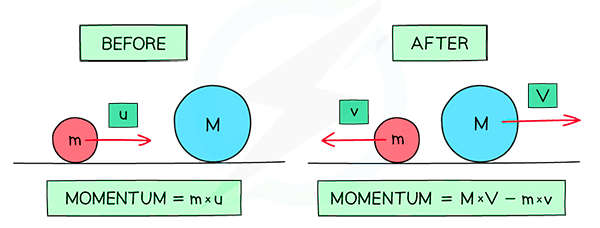Momentum Calculator
Calculate Linear Momentum and Velocity Changes Instantly
📋Understanding Linear Momentum
-
Enter mass, velocity or momentum values.
-
Choose units (e.g. kg, m/s).
-
Click "Calculate" and see momentum results.
Momentum (p) is a measure of the "quantity of motion" an object has. To calculate it, simply multiply the mass (m) of the object by its velocity (v).
Our calculator follows the formula: p = m \times v. Unlike kinetic energy, momentum is a vector quantity, meaning its direction is just as important as its magnitude. This tool is ideal for analyzing collisions, recoil, and propulsion systems.
Useful Tips💡
-
Use negative values for velocity if an object is moving in the opposite direction.
-
Remember that an object at rest has zero momentum, regardless of its mass.
Mistakes to Avoid ⚠️
- Treating momentum as a scalar and ignoring the direction of travel.
- Using weight (force) instead of mass.
- Mixing units, such as grams with kilometers per hour.
How Momentum Calculations Work?
Linear momentum is found using determines using the formula p = m × v, where p denotes momentum, m is mass, and v is velocity. When determining total momentum in a system, collectively add all object afflicting on momentum. To calculate either mass or Speed, rearrange the formula to either m = p ÷ v or v = p ÷ m.
The calculator does all these calculations for then you're including the other calculations, so you know it is correct in regard to precision. Remember, momentum is a vector quantity, hence direction is significant in these calculations, specifically using the proper units.
Each unit that follows must be equivalent, referring to mass generally in kg and Speed in m/s; yielding kg·m/s = momentum. Where these principles of momentum and the formula, being steep in classical mechanics, can be substantiated with known standards in physics to ensure they are correct.

Practical Applications📊
-
Examine motion of objects in physics experiments or classroom studies.
-
Calculate total momentum for collision analysis in engineering or automotive design.
-
Use with Speed and mass data to analyze dynamics in sports or other vehicle performance.
Questions and Answers
What is a momentum calculator?
A Total momentum calculator is a tool that calculates linear Impulse by inputting mass and velocity into the traditional equation, p = m × v. The momentum equation calculator can calculate total momentum for entire systems or simply for solving an unknown mass or velocity. Using CalcMate, users would simply input their data to arrive at an instantaneous calculation (in kg·m/s) of impulse of motion for anybody in motion. So, whether you're a student of physics or a professional researching, and studying the motion of bodies, then the momentum calculator would be an effective tool to have!
How to calculate momentum with mass and velocity?
To count the momentum, simply enter mass (in kg) and velocity (in m/s) into the momentum calculator. The calculator will use the linear Motion equation (p = m × v) to arrive at momentum (in kg·m/s). For example, a 2000 kg elephant traveling with a velocity of 5 m/s would have a momentum of 10,000 kg·m/s. You will always arrive at accurate solutions to problems for physics projects or in real life examples.
Is momentum a vector quantity?
Yes! Momentum is a vector quantity because it relies on velocity and it takes into consideration both the magnitude and direction. Therefore, the momentum vector will be in the same direction as the velocity vector. Direction is also important in physics calculations. For example, to calculate cumulative momentum before and after a collision, you use the mobile calculator to determine impulse of motion before the collision (and the change in direction) to arrive at total impulse of motion.
What are the units for momentum?
The standard SI unit is kilogram-meter per second (kg \cdot m/s). There is no special named unit like the "Joule" for momentum.
How is momentum different from kinetic energy?
Momentum is proportional to velocity (v), while kinetic energy is proportional to velocity squared (v^2). Momentum is a vector; kinetic energy is a scalar.
Can an object have high momentum but low kinetic energy?
Yes, a very massive object (like a ship) moving very slowly has high momentum but relatively low kinetic energy compared to a fast bullet.
What formula does the momentum calc use?
When we use the online linear Motion calculator, we are actually using one of the many linear momentum formulas; p = m × v where p is momentum, m is mass, and v is velocity. For the total momentum in a system, then, we would sum the total Force of all the momentum components and add them up: p_total = Σ(m × v). When calculating the change in momentum, use the following formula; Δp = m × (v₂ - v₁). All of these variables are either parts of formulas, or defined as part of the International System of Units (SI) by Isaac Newton and the International Union of Pure and Applied Chemistry (IUPAC), which means that we can count on them to be used reliably in physics, including collision analysis or any kind of motion study.


